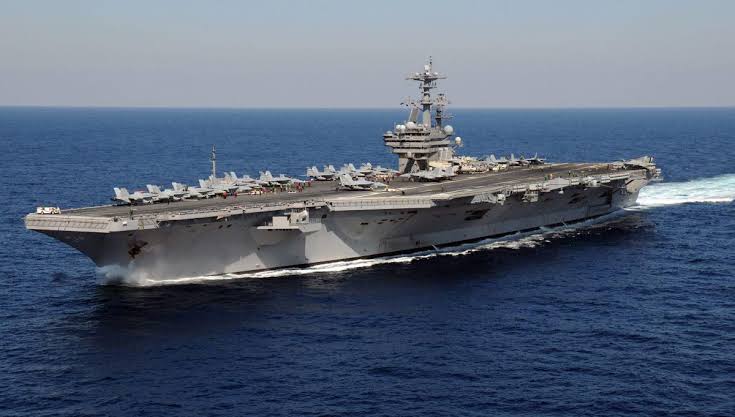Navy’s Third carrier and other associates which must be provided

India finally relented and accorded permission to Australia to join the Malabar Series of Exercises because now Australia has shown that it has guts to stand up to the Chinese bully. India thus invited a fourth partner to Exercise Malabar—the Royal Australian Navy—to join Japan and the U.S.
The Indian Army is capable of taking on the Chinese People’s Liberation Army (PLA) in both the Ladakh region and Arunachal. When the time comes, the Army may even move out and help the Tibetans in getting back their land. However the real place to choke the Chinese jugular vein will be the Indian Ocean Region and the Indo Pacific.
To be able to do it, there has to be some major Indian naval acquisitions during the next fifteen years or so. Construction of a third aircraft carrier of 65000 tons for the Navy must commence by 2022 and a few years down the line, that of the fourth one.
Navy officials must finalize the size, the deck design, the propulsion and the type of aviation complement required for these two carriers. These will enable India to dominate the Indian Ocean region.
The Quad (Quadrilateral Security Dialogue) partners: Australia, Japan and the U.S. will be of great assistance in this matter. Of course cooperation with France has already commenced in earnest.
The third aircraft carrier, a 65,000-ton catapult-assisted-take-off, barrier-arrested-recovery (CATOBAR) flat-deck, with preferably nuclear propulsion, which envisages the launch of fixed-wing reconnaissance aircraft in addition to fighters, is the need of the hour.
Regional security, including that of sea lines of communication, remains an important objective for the Indian Navy but is now more important than ever.
It is imperative that in order to be able to help the Tibetans in foreseeable future to liberate their motherland, the Indian Navy must be controlling access to sea lanes across the Indian Ocean, from the Straits of Malacca to Hormuz and the Gulf of Aden.
The Indian Navy should intend to have a fleet of 7 naval fighter squadrons by 2033. They already have the two MiG29 K Squadrons. Then 111 utility helicopters, 123 multirole helicopters, 24 Sikorsky MH-60R helicopters and six additional P-8I long-range maritime reconnaissance aircrafts are on order.
Now in addition the Navy needs to have 100 new fighters, 18 more P8Is, 48x Medium Range Maritime Recce air crafts and 12x Dornier/Saras mk2 for Short Range Maritime Recce..
It needs to be trialled if the C295 which are going to be produced in India can fulfill the MRMR role or else we go for another suitable aircraft. To meet the requirement of 100 fighters, there us no need to import anything.
CCS clearance needs to be accorded for 40 x Naval Tejas now and the TEDBF will then make up the rest 60. Later the TEDBF will replace the MiG29Ks and also be produced for the fourth aircraft carrier.
All the above programme taken together offers a lot of scope to jump-start aviation industry in India. There is tremendous scope for the Indian industry in building the capability required by the navy in the coming decade and beyond with viable options and for boosting industry. So we need not go for Western equipment or rely just on the Russian. The time has come for 100% indigenous Indian hardware for the Navy.
Adm Arun Prakash (Retd), former navy chief and the chair at India’s Naval War College, has very clearly brought out that such acquisitions have already been contemplated by the navy in prior planning. However these plans were made in a strategic vacuum, at the national level, at the time.
It is ironic that for the first time the importance of the maritime domain has been driven home to decision-makers because of the confrontation in the Himalayas. He further adds that “The ‘hardware versus strategy’ conundrum, where we have been thinking about strategy only after acquiring hardware, is a process that needs to be reversed.”
“As a navy, we are absolutely clear of the utility of the third aircraft carrier, because air operations are absolutely integral to naval operations—air power at sea is absolutely required. And it is required here and now, that kind of air power,” he said.



